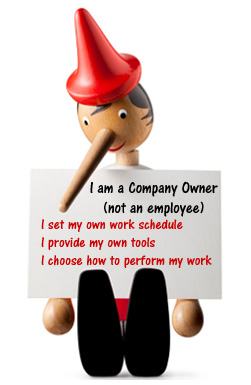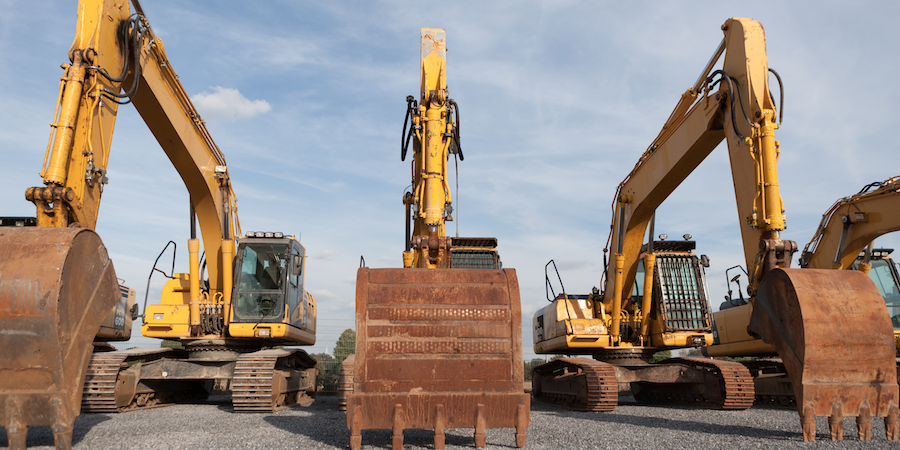This article by Representative Armando Walle, D-Houston originally appeared in the Houston Chronicle on April 1, 2013. Reprinted with permission.In recent years,...
Reshaping the Construction Industry



The American Subcontractors Association’s National Business Forum and Convention was held two weeks ago in Las Vegas and, by any measure, it was a resounding success.Part of what made it so successful was a shift in how time at the convention was scheduled. Usually when you go to these events, you have to hit the ground running. You’re attending classes and panel discussions all day long, then you head for the very structured evening events. Those are great and they were still part of this convention, but the big difference was the amount of time that was built in to allow for what you might call “organic networking.”
April 02, 2013


Employment picks up in most states but federal cuts loom; rail, factory construction riseEditor’s note: Construction Citizen is proud to partner with AGC America to bring you AGC Chief Economist Ken Simonson's Data DIGest. Check back each week to get Ken's expert analysis of what's happening in our industry. Click here to view February state employment tables.In February, seasonally adjusted nonfarm payroll employment increased from a year earlier in 49 states and the District of Columbia and dipped by 0.3% (800 jobs) in Wyoming, the Bureau of Labor Statistics (BLS) reported today. Seasonally adjusted construction employment climbed in 29 states and D.C., fell in 20 and was unchanged in Delaware. Alaska had the largest percentage increase (13.3%, 2,200 jobs), followed by Hawaii (8.0%, 2,300 jobs) and Texas (7.5%, 43,300 jobs). Texas added the most new construction jobs over the past 12 months, followed by California (35,800, 6.2%). Rhode Island lost the highest percentage (-10.4%, -1,700 jobs), followed by Arkansas (-9.6%, -4,700 jobs). Ohio lost the most jobs (-7,900, -4.3%), followed by Illinois (-7,500, -3.8%). From January to February, seasonally adjusted construction employment rose in 35 states, was static in three, and fell in 12 states and D.C. (BLS combines mining and logging with construction in D.C., Hawaii, Delaware and four other states to avoid disclosing data about industries with few employers).
April 01, 2013


The construction industry is facing a perfect storm of issues, which will result in severe skilled workforce shortages in the near future. The Construction Labor Market Analyzer® (CLMA) provides the reliable data that Owners and contractors need to plan their future projects to avoid higher labor costs and missed schedules because of skilled trade shortages. The CLMA® also provides regional trend information by craft to focus new recruiting and training programs to the critical needs of the industry. The HistoryWhen the construction volume peaked in 2006 to 2008, there were more projects than there were skilled trades to work on them. Competition for skills increased wages and incentives, which resulted in busted budgets, missed schedules and sometimes, cancelled projects. Contractors were using extended overtime, per diems, completion bonuses and other innovative approaches to staff their projects.
April 01, 2013


If you could ask four of the top developers in the United States any question about their business, what would you ask? That is what I get to do on Tuesday, April 2, 2013.The...
March 29, 2013


Following at least a month of weekly stakeholders meetings, Senator John Carona is set to lay out his vision for dealing with worker misclassification in a Texas Senate committee next Tuesday.The Dallas Republican's Senate Bill 676 is the result of balancing the need to fix the problem against the concerns of some players within the construction industry who don't want to the bill to go too far. The sticking points have included whether the state should create its own definition for subcontractor – rather than just stick with the IRS definition – and whether the specific amount for penalties should be written into the statute or set by the Workforce Commission on a case-by-case basis. The Texas Association of Business would prefer the latter option.In the Texas House on Wednesday, Representative John Davis presented to the Economic & Small Business Development Committee his bill on this issue.
March 29, 2013


This month the Construction Career Collaborative (C3) elected a Board of Directors and Executive Committee. This is an important milestone for the organization, and we are extremely grateful to our owner representatives for agreeing to serve not only on the board, but also in key officer positions. These individuals are charged with moving the initiative forward by providing wise stewardship and advocacy for C3 principles.The organization will fill remaining open board positions through 2013.C3 would like to extend our thanks to these individuals and wish them great success in their efforts.2013 BOARD OF DIRECTORS
March 28, 2013


The state of Utah is fighting worker misclassification in the construction industry by scrutinizing employment records of companies who hire limited liability corporations, or LLCs. Some dishonest contractors avoid paying their workers as employees by having each of them register as separate LLCs, claiming on paper at least that each worker is a company owner or independent contractor.Two years ago the state legislature created an enforcement council consisting of representatives from the state’s Labor Commission, Department of Commerce, Tax Commission, Department of Workforce Services and the Utah attorney general. The council meets monthly to share information about construction companies in order to identify and stop worker misclassification, or payroll fraud. The 2013 legislature has now authorized the continuation of the Worker Classification Coordinated Enforcement Council for the next three years.The Utah Division of Occupational and Professional Licensing (DOPL) is in charge of enforcing state licensing rules for construction companies. This week, an article in the Salt Lake Tribune explained how these rules provide one way for contractors who commit payroll fraud to be caught. The article states:“Changes in 2011 tightened definitions of employees and owners for licensed construction companies, set new reporting rules and provided for state auditing to verify financial responsibility. Licensing disclosure rules give officials a crucial glimpse into how companies operate, as well as a squeeze point when their practices are out of bounds.”
March 27, 2013


A fight is brewing in Austin between bankers and the construction industry. The Texas Construction Association and the Associated General Contractors Texas Building Branch are pushing lawmakers at the state capitol to require that lenders notify construction firms when a decision is made to discontinue funding for a project.Some projects get their funding pulled in the middle of building, and in some cases, the construction firms are essentially hung out to dry. In the event a bank decides it will stop the flow of money to a project, that same bank can also later foreclose on the project. "When they foreclose on the project, they wipe out any of our liens," TCA President and CEO Raymond Risk said. "They've gotten all this work done by us."Two bills have been filed to address the issue:SB 295 by Senator Bob Deuell, R-GreenvilleHB 2180 by State Representative Cecil Bell, R-MagnoliaRisk said some TCA members have been hurt significantly when this happened.
March 26, 2013


States, metros split between construction job gains, losses; starts jump from a year agoEditor’s note: Construction Citizen is proud to partner with AGC America to bring you AGC Chief Economist Ken Simonson's Data DIGest. Check back each week to get Ken's expert analysis of what's happening in our industry.Click here to view January state and metro data.New state and local construction employment data show an even split between growth and decline from January 2012 to January 2013, according to analyses of Bureau of Labor Statistics (BLS) reports that AGC released this week. BLS reported today that 306 metropolitan areas had year-over-year increases in nonfarm payroll employment, 57 had decreases and nine had no change. AGC reported that of the 339 metro areas (including divisions of larger metros) for which BLS reports construction employment, 145 had increases, 141 had decreases and 53 were stagnant. (BLS combines mining and logging with construction in six states, the District of Columbia and most metros to avoid disclosing data about industries with few employees.
March 25, 2013



.jpeg?itok=6uFZXEBH)





.jpeg?itok=4Vi_1nJG)













